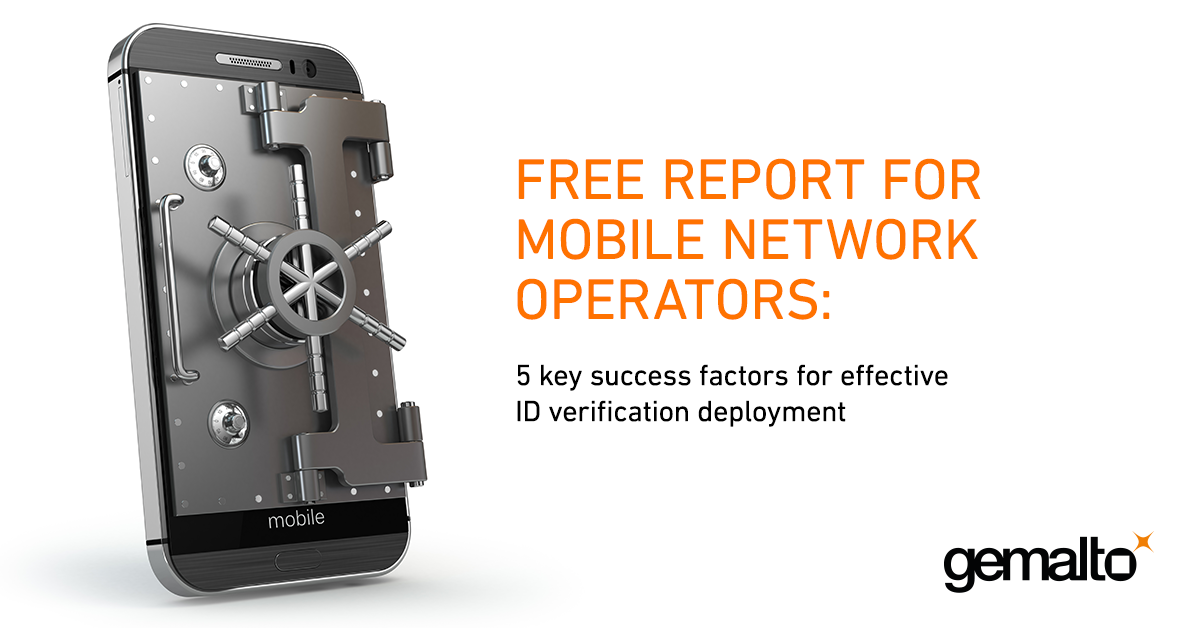
ID fraud is a critical issue for MNOs (Mobile Network Operators); there are approximately 200 types of fraud, and 35% of all mobile fraud comes from subscriptions. It’s an issue that cannot be ignored; the cost is too great for many MNOs to bear. Furthermore, in addition to damaging profits, it damages consumers as well, thanks to the inhibitive effect fraud has on innovation. How can we innovate successfully if we are continually forced to divert significant funds and resources towards mitigating fraudulent activity?
As we’ve discussed in a previous post, there are three overarching reasons to care about the problem:
- Revenue: the total annual cost of identity fraud globally is €40 billion
- Regulation: financial services on mobile are growing. MNOs must meet KYC regulations or face heavy fines
- Reputation: identity fraud victims will abandon networks they no longer trust to keep them secure
But how can we counteract all this fraud? The answer lies in the deployment of trusted and tested identity verification services that can perform effective checks in real time. These solutions are available and are flexible enough to meet a wide range of needs – they can provide identity document verification (to check authenticity), customer authentication (to check the holder is the correct owner) through advanced biometric checks, risk assessment (which checks a holder against control lists), ID verification reports (for audits) and automatic form filling (to speed up enrolment and limit manual input errors).
With all of this in mind, MNOs will of course want to know what the keys to success will be. Can they be confident that it’ll all work? See below for the five key factors that will affect the success and effectiveness of a roll out.
- A phased and systematic approach
Phasing implementation ensures the effectiveness of the solution is well tested and perfected before it’s fully initiated. With this approach, teams can draw on best practices and lessons learned, rather than migrating all stores at the same time, which can pose problems. These first stages are essential when trying to understand, analyze and document the dynamics of identity fraud on a small scale, before expanding it across all stores.
This phased and systematic approach also requires anticipation of new regulations which might be introduced during deployment; of course, this is easier said than done. It is essential though, if you want to ensure ID checks can be extended to all use cases (including enrolment for specific value-added services) as well as purchase and renewal of prepaid and postpaid SIMs. As a result of all this, MNOs will ensure they meet current legal requirements and will be prepared for the introduction of more.
- Strong feedback
Feedback is crucial and shouldn’t be underestimated. Store managers can share best practice techniques whenever possible. With profitability as a collective main objective, any solution that cuts or at least reduces ID fraud and related costs should be welcomed with open arms. As soon as the benefit of the ID Verification solution is realized, it will then be discussed at length internally, encouraging strong adoption across the board.
- A user-centric approach
When it comes to acceptance, we must keep things as simple and convenient as possible for all employees and customers. This means in-store staff will be able to focus on customer care rather than on admin.
It can be something as simple as automated form filling that provides convenience for the customer and clerk, as it speeds up enrolment and avoids needless input errors.
And if the company can prove it is handling its customers’ details securely while streamlining interaction, it will be able to build a deeper and more trusted customer relationship.
- Integrating with legacy infrastructures
The best identity verification services are designed to have a minimal impact on existing infrastructures. They plug seamlessly into existing IT systems and can be used (with or without scanners) on mobile devices such as smartphones and tablets. This easy and flexible integration into existing infrastructure ensures a quick deployment. In addition, adaptable reporting allows easy integration into existing back-end systems.
- Addressing MNOs’ acquisition strategies
On top of regular internet and mobile services, MNOs can also offer more value-added services now, such as transport ticketing and banking and payment services. For example, our own identity verification services from Gemalto offers a unique and consistent way to cover all those services at the same time, helping streamline sales processes both in-store and remotely.

So, there you have it – the five key factors for successful ID verification deployment. To discover more, you can download our free report here, or click the image below.
For more information on Gemalto multi-channel identity verification services, featuring advanced biometric checks, see our dedicated page here.
What do you think? Are there more key factors you would bear in mind? Let us know by tweeting to us @GemaltoMobile or @Gemalto, or leave a comment below.



